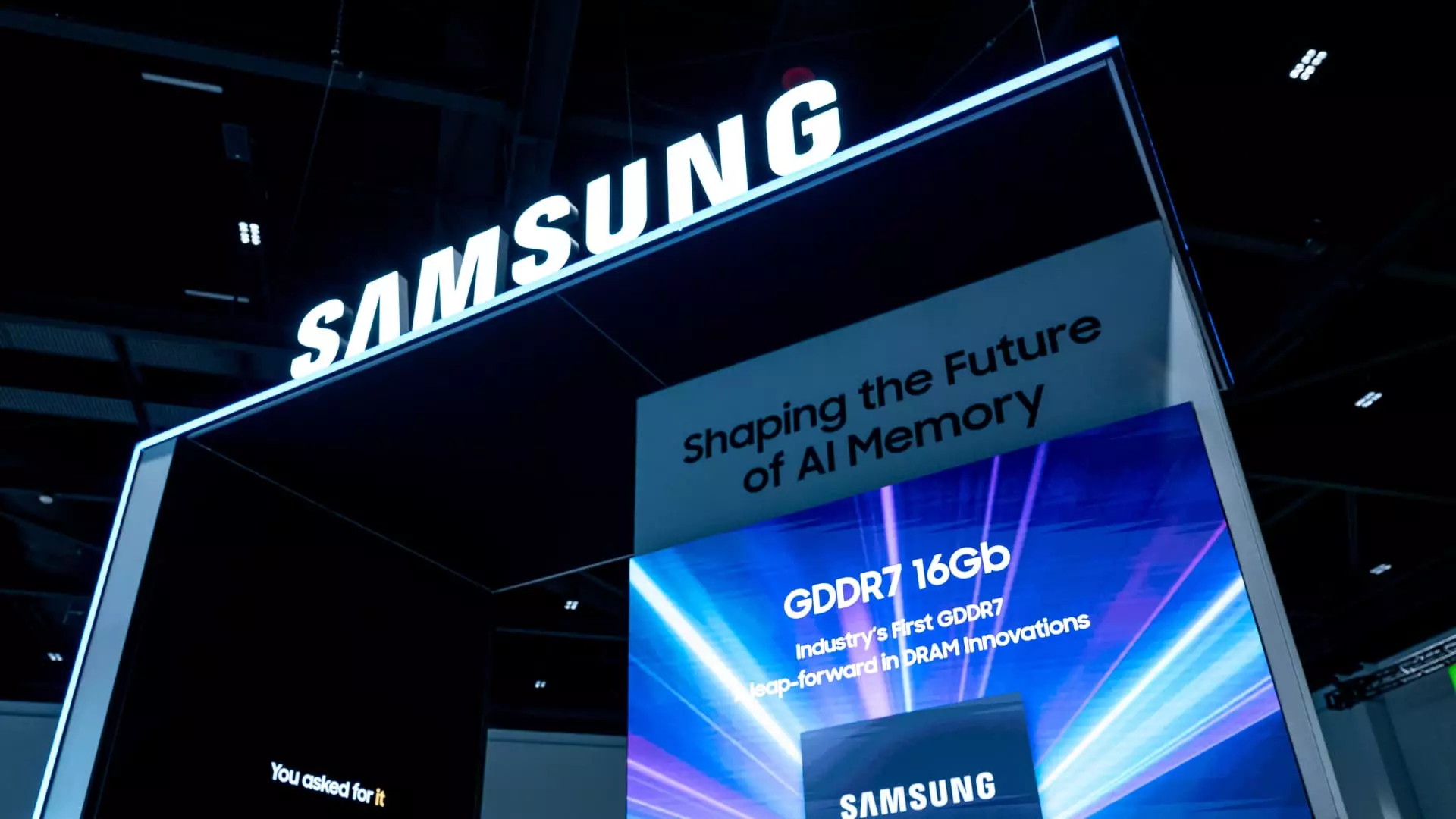Samsung Electronics, a titan of the tech industry, is grappling with an alarming downturn that underscores the fragility of its once-unstoppable empire. A projected 56% plunge in second-quarter profits—down from over 10 trillion won to roughly 4.6 trillion—reveals more than just a temporary setback. It highlights fundamental shifts in the global semiconductor landscape and exposes Samsung’s vulnerabilities. Despite its massive scale, diversification, and innovation efforts, the company finds itself stymied by a complex confluence of factors: intensified competition, geopolitical restrictions, technical delays, and a rapidly evolving AI hardware market.
This trajectory is far from just a cyclical hiccup; it signals strategic missteps that could jeopardize Samsung’s position if not addressed with unwavering resolve. The fact that their revenue stood just shy of forecasted targets reveals internal misalignments—an inability to effectively navigate the tumultuous waters of the current tech ecosystem. The decline, though not catastrophic, is a stark wake-up call: no company, regardless of size, can afford to rest on past laurels in an era marked by relentless innovation and geopolitical turbulence.
Challenges in AI Chip Domination and the Memory Market
At the heart of Samsung’s struggles lies a fierce competition in the high-end memory segment—particularly high-bandwidth memory (HBM)—which is critical for powering AI applications. Nvidia has solidified its dominance, thanks to strategic alliances with key suppliers like SK Hynix, which controls the majority of the global HBM market share. Samsung, despite being a major memory and smartphone powerhouse, appears caught in a quagmire: delays in certifying its latest HBM products for Nvidia and challenges in passing qualification standards.
While Samsung’s efforts to produce cutting-edge HBM chips are underway, the setbacks are palpable. Reports indicate that plans to secure Nvidia certification have been pushed back, limiting their ability to capitalize on booming AI-related demand. Only a marginal supply from Samsung to AMD’s AI chips means that the company’s potential to increase revenue from high-margin segments remains unrealized—highlighting a strategic lag in an arena where timing is everything. In this domain, Nvidia’s outsized presence—supplying about 70% of the global demand—serves as both a challenge and an indication that Samsung needs more aggressive innovation if it hopes to catch up.
Operational Challenges and Geopolitical Headwinds
Beyond technical delays, Samsung’s operational health is waning. Its foundry division, which once seemed poised to rival TSMC, is now facing declining orders and intense competition. TSMC’s relentless leadership in wafer fabrication, coupled with its streamlined operations, continues to threaten Samsung’s market share. Meanwhile, US-imposed restrictions targeting China and advanced AI chip exports have constricted Samsung’s ability to operate freely in key markets. These restrictions restrict access to critical supplies and hinder the company’s ability to innovate at the pace required to stay competitive.
Adding to the turmoil, internal cost-cutting measures—including significant workforce reductions—signal a company under stress, grappling with declining orders and an uncertain future. Such measures, while necessary in the short term, may risk stifling innovation and agility—a vital requirement in the fiercely competitive AI and semiconductor landscape. The relatively muted prospects in the high-margin HBM segment and ongoing operating losses point to an urgent need for Samsung to rethink its strategic positioning and core competencies.
Implications for the Future: Innovation, Strategy, and Survival
Samsung’s current predicament exposes a broader truth: Dominance in consumer electronics and memory chips alone no longer guarantees future prosperity. In a world where AI, 5G, and next-generation semiconductors define competitive advantage, Samsung must overhaul its approach to innovation and strategic alliances. Relying heavily on existing segments, even with blue-chip brand recognition, is a strategy that risks being outflanked by nimbler rivals—especially when the industry’s technological breakthroughs occur with lightning speed.
The company’s delay in passing Nvidia’s qualification standards and its struggles to ramp up cutting-edge HBM production are symptomatic of deeper strategic inertia. The industry demands proactive research, aggressive partnerships, and an unmistakable focus on future market needs. Without those, Samsung risks slipping further behind, watching its profits diminish and its influence wane.
As the market witnesses Samsung’s modest stock recovery—up over 16% YTD—its prospects hinge on executing a bold, transformative strategy that can outpace competitors. This might involve divesting or refocusing its foundry operations, forging stronger alliances with AI chipmakers, and accelerating its R&D efforts in high-performance memory. Failure to act decisively could mean a prolonged period of stagnation, with competitors like TSMC and SK Hynix consolidating their market dominance.
In essence, Samsung stands at a pivotal crossroads. The once unassailable leader must now reinvent itself—embracing innovation, strategically navigating geopolitical minefields, and redefining its core business model if it hopes to sustain its legacy in the fast-changing, fiercely competitive semiconductor world.

